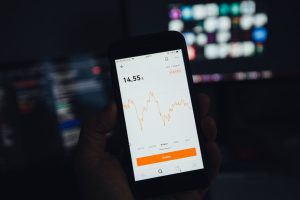Forex trading is a complex financial market that involves buying and selling currencies. One of the most important aspects of forex trading is understanding how to identify and follow trends. A trend is the general direction of the market movement over a certain period of time. Being able to identify and follow trends is crucial for forex traders who want to make successful trades and maximize their profits.
Here are some steps that can help you to line up forex trends:
1. Identify the Time Frame: The first step to lining up forex trends is to identify the time frame that you want to analyze. Forex traders can choose from different time frames such as daily, weekly, monthly, or even hourly. The time frame you choose will depend on your trading style, risk tolerance, and market preferences.
2. Look for Chart Patterns: Once you have identified the time frame, the next step is to look for chart patterns. Chart patterns can help you to identify trends and predict future market movements. There are different types of chart patterns such as triangles, head and shoulders, and double tops and bottoms. Each pattern has its own unique characteristics that can help you to identify trends.
3. Use Technical Indicators: Another way to line up forex trends is to use technical indicators. Technical indicators are mathematical calculations based on the price and volume of a currency pair. Some of the most popular technical indicators used by forex traders include moving averages, relative strength index (RSI), and stochastic oscillator. These indicators can help you to identify trends, overbought and oversold conditions, and potential entry and exit points.
4. Analyze Market Sentiment: Market sentiment refers to the overall attitude of traders towards a particular currency pair. It is important to analyze market sentiment because it can give you a clue about the future direction of the market. There are different ways to analyze market sentiment such as reading news articles, monitoring social media, and tracking economic indicators.
5. Use Support and Resistance Levels: Support and resistance levels are price levels where the market tends to bounce back or reverse. These levels can be used to identify trends and potential entry and exit points. Support levels are price levels where the market tends to bounce back up, while resistance levels are price levels where the market tends to bounce back down.
6. Keep an Eye on Economic Events: Economic events such as interest rate decisions, GDP reports, and inflation data can have a significant impact on the forex market. It is important to keep an eye on these events because they can create volatility and affect currency prices. Economic calendars can help you to stay up-to-date with important economic events and their potential impact on the market.
In conclusion, lining up forex trends is a crucial aspect of forex trading. By following the steps outlined above, you can identify and follow trends, predict future market movements, and make successful trades. Remember that forex trading involves risks, and it is important to manage your risks by using proper risk management techniques such as stop-loss orders and position sizing.





